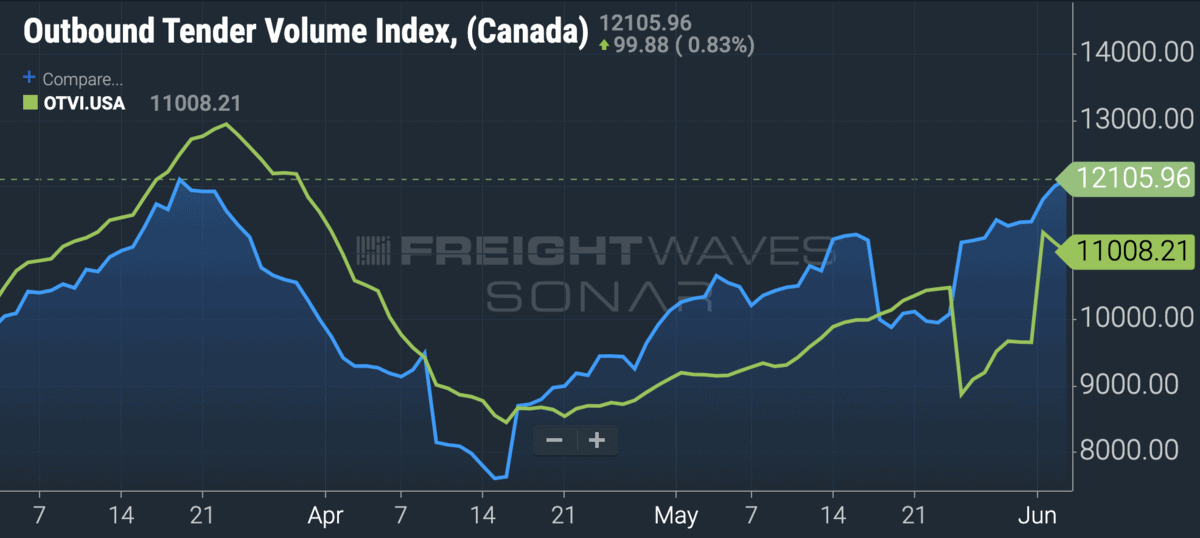The number of trucks crossing the U.S.-Canada border reached its highest level since late March, Canada Border Services Agency (CBSA) data shows.
Nearly 86,000 truckers entered Canada from the U.S. during the week ending May 31. That represents a decline of almost 22% compared to a year ago, the CBSA said late on Wednesday, June 3.
The latest data point offers yet another positive signal for cross-border freight as it slowly recovers from the COVID-19 slowdown. It also aligns with the rebound in freight volumes in the U.S. and Canada.
Despite the uptick in cross-border trucking, the pandemic’s drag remains staggering. Merchandise trade between the U.S. and Canada declined by more than 35%, or C$23.4 billion, in April, according to a June 4 report released by Statistics Canada. Auto manufacturing and energy accounted for most of that plunge.

The resumption of auto manufacturing in the U.S. and Canada likely is helping boost cross-border freight. The Outbound Tender Volume Index for Canada (OTVI.CAN) on FreightWaves’ SONAR platform sat just below its 2020 high on June 3, its best level since March 19.
But as Statistics Canada noted, “a return to pre-COVID-19 production levels is not expected in the near-term.”
Canadian trucking industry asks for more aid
But even as freight volumes recover, the state of the trucking industry remains perilous. Carriers continue to run with a high percentage of empty miles – when trucks move without freight to get their next load.
Earlier this week the President of the Canadian Trucking Alliance, Steve Laskowski, pressed Canadian lawmakers for more government aid.
Canadian trucking companies are seeking easier access to the Canada Emergency Wage Subsidy. Many carriers aren’t eligible because their loss in revenue has yet to drop below the 30% threshold.
The wage subsidy, similar to the U.S. Paycheck Protection Program, covers up to 75% of a salary.








Best coffee on the Highway, Eh!
Canadian’s turn into violent protester’s when a US Trucker’s are inside Canada. Like they are trying to hide something or think your ruining Canada